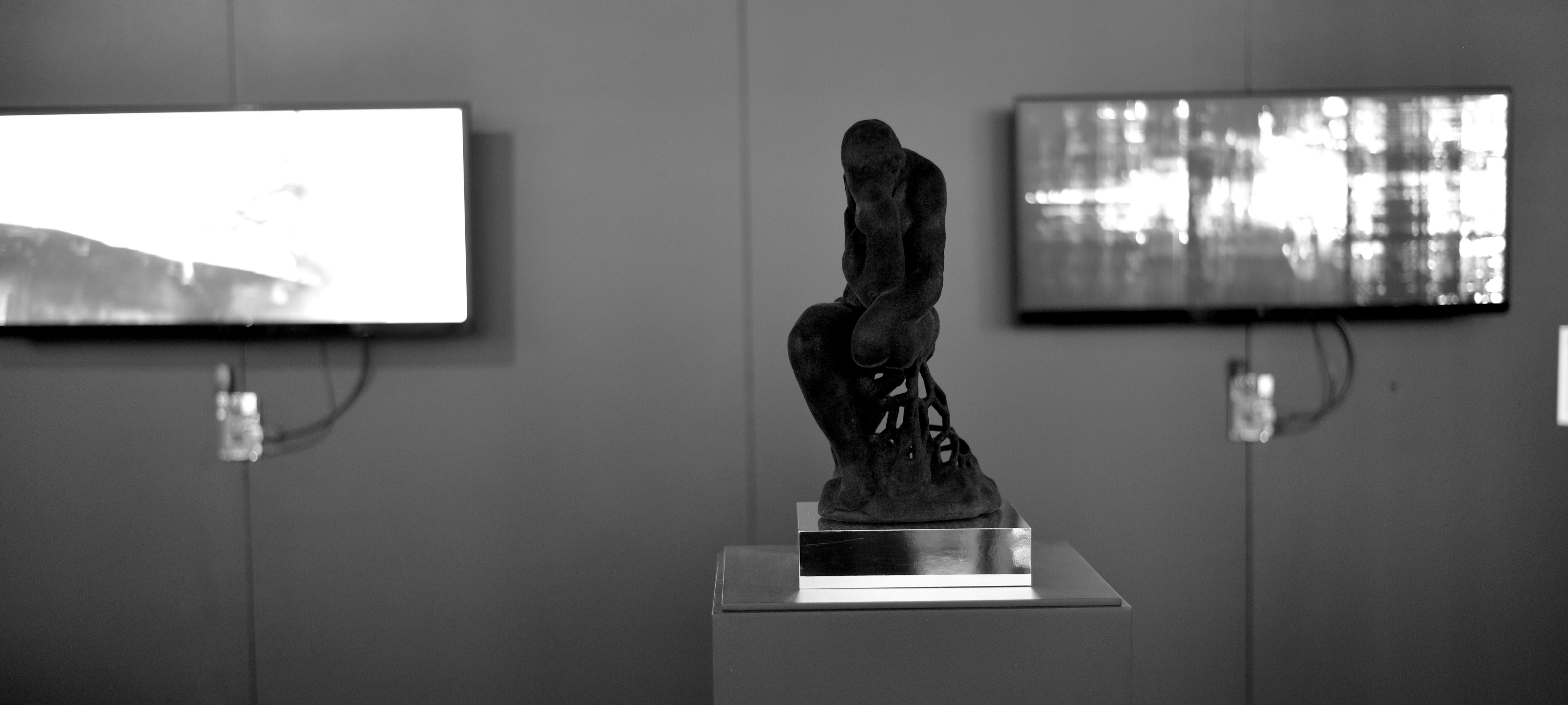The Thinker – “Without Form and Void”
“Towards a 21st Century Thinker” is a new art- and research project by De Wilde, kickstarted in collaboration by the #KULeuven, researching #ethics in relation to our contemporary #society within the trinity of #art, #science and #technology. The project specifically targets artificial brain research, here represented by custom code and hardware to data mine the internet for footage (e.g. ruins, e-waste, masses, …).
De Wilde’s latest #essay entitled ‘Deep Learning Through Cinematic Space’ published by Amsterdam/Chicago University press (The Art of Ethics in The Information Society) frames within this context.
Frederik is currently researching the nature and scale of #hyperconnectivity and the Self in collaboration with Ms. #Dewandere who studied applied #physics #engineering and #economics at the University of #Louvain, operations research at the University of #California (#Berkeley) and #philosophy at the Free University of #Brussels (#ULB).
General
Many ancient cultures viewed the afterlife as a subterranean place where departed souls go after death, a dark dusty, murky, bodiless and joyless existence in the netherworld. Others spoke of the void as being “cast into outer darkness” or “into a bottomless pit.” Both are apt images of the void.
There are many ways to approach this topic. The one chosen here is to pose a question about August Rodin’s famous sculpture, The Thinker. It portrays a nude male figure in deep contemplation.
The irresistible question that arises is: about what is the Thinker thinking?
Does he meditate of the infinite expanding universe; or, perhaps, he is pondering Plato’s eternal verities: Goodness, Truth and Beauty? Or, maybe he is just trying to remember where he left his keys.
The answer to this provocative question lies in its original setting, the massive bronze doors created by Rodin for the opening of the Museum of Decorative Arts in Paris.
The panels on the bronze doors beneath the figure of The Thinker depict the Last Judgment as envisioned by Dante in his classic work, The Devine Comedy. The doors, entitled “The Gates of Hell”, vividly portray the horror and desperation on the faces of those lost souls who were falling into the Inferno of Hell. Thus, according to Rodin, The Thinker ponders the ultimate destiny of humankind apart from its Divine Source. The original figure of The Thinker became model for several massive bronze replicas fashioned later by Rodin, which were exhibited detached from its original context.
In his Comedy, Dante describes the words emblazoned over the Gates of Hell: “Abandon All Hope Ye Who Enter Here.” With those words of warning, Dante presents his version of the void. Therefore, The Thinker contemplates the emptiness and hopelessness of life lived inside the void.
De Wilde is fascinated by the concept of the void which stretches throughout his oeuvre. In this particular case De Wilde discovered a little known fact concerning ‘The Thinker,’ namely that the Cleveland’s ‘Thinker’ was the victim of a terrorist attack -which seems to mark our time- on March 24, 1970. Unidentified bombers strapped what is suspected to have been three sticks of dynamite to its base. The explosion blew off ‘The Thinker’s’ feet and irreparably damaged the legs. The sculpture is still on exhibit, though it has not been restored. De Wilde’s Thinker makes a subtle reference to this particular terrorist attack.
Deliberate destruction of cultural heritage is of all ages. Contemporary examples include the violent attacks by ISIS/ISIL. They have plundered and destroyed at least 28 historical religious building and numerous artefacts in Irak, the inheritance of humanity and the Iraqi people. It has to be noted that some of the destroyed artefacts where plaster replicas.
◊
Ed. 1. / 7 . AP
◊
The sculptures can be produced in different materials and sizes, e.g. copper, nickel, chrome, silver and gold (non-exhaustive list). Each material is de facto a limited edition.



